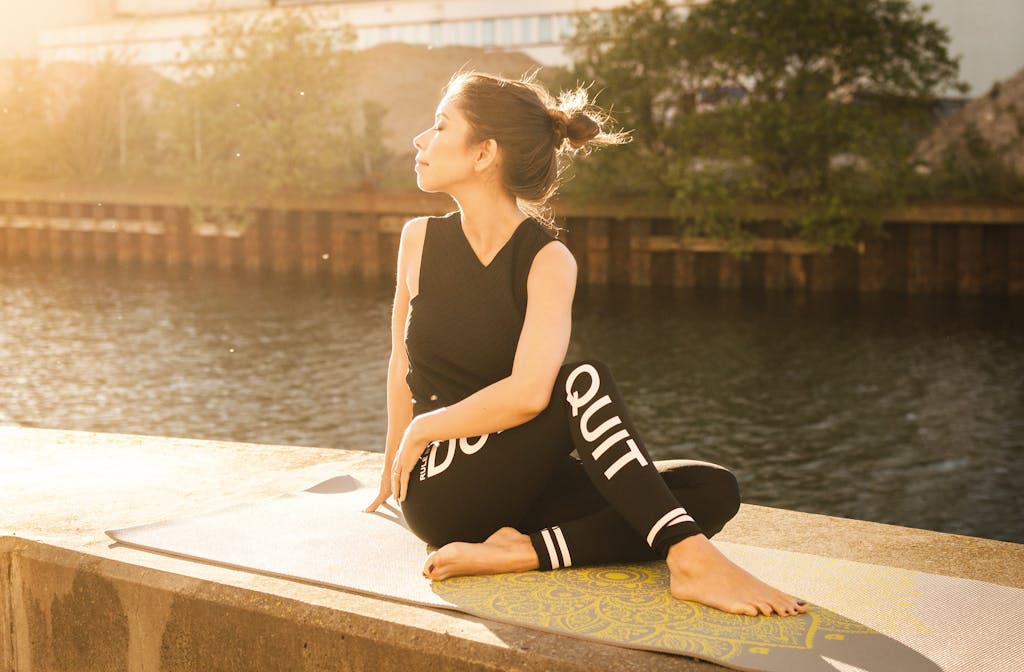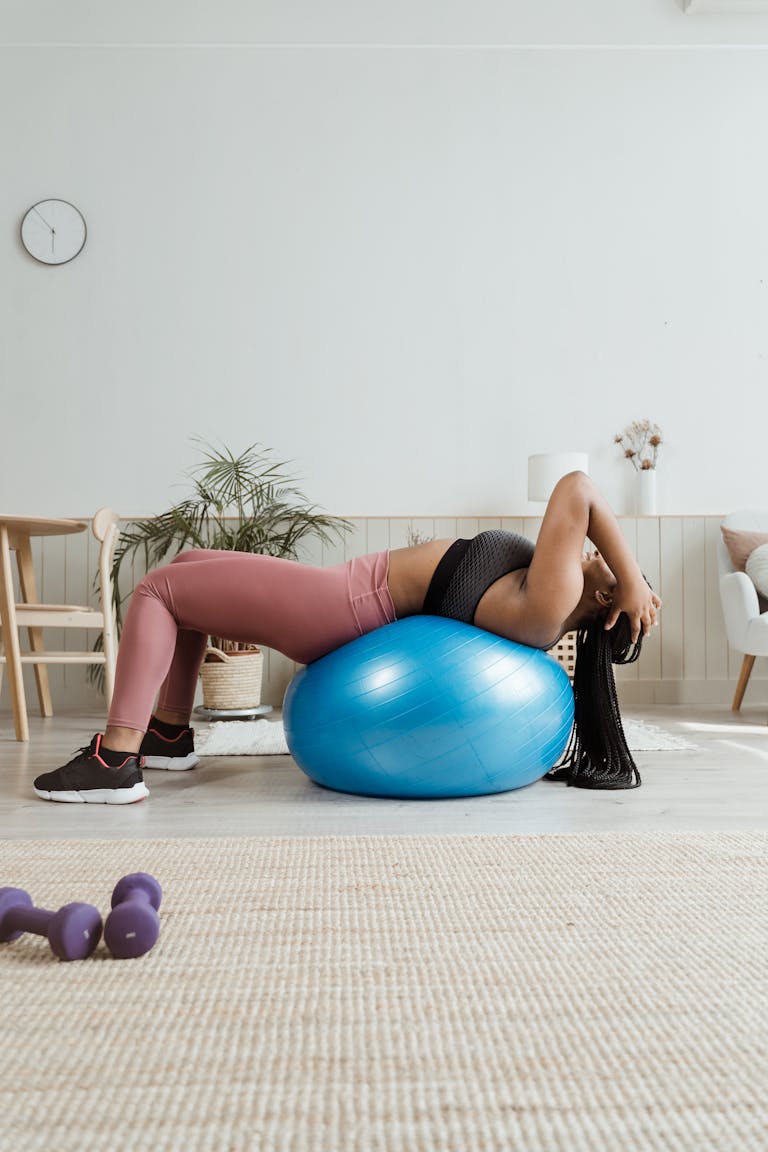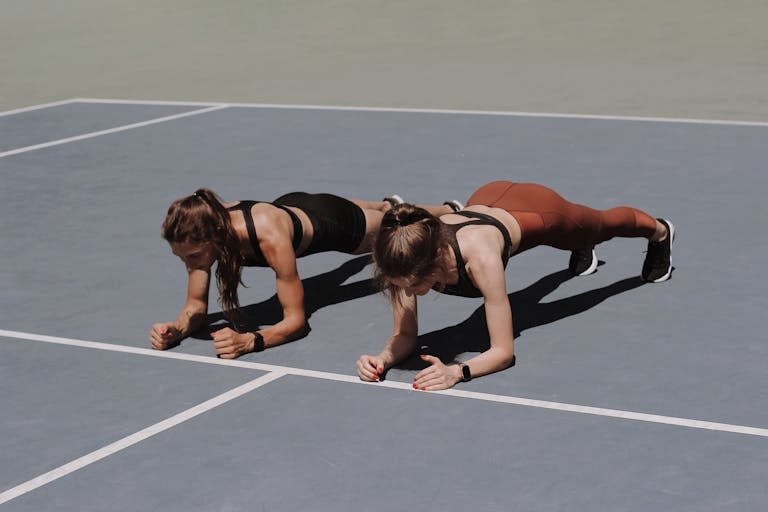Yoga for Stress Relief: Poses That Help You Breathe, Unwind, and Feel Human Again

Life gets loud. Whether it’s work, family, screens, or the endless to-do list, it’s easy to find yourself stuck in a state of constant tension—mentally and physically. You might feel it in tight shoulders, shallow breathing, racing thoughts, or that wired-but-tired feeling that won’t go away.
If you’ve been craving stillness but can’t seem to get there, yoga might be exactly what your nervous system needs.
This isn’t about mastering difficult poses or pushing yourself to sweat. This is about slowing down, softening your body, and giving yourself space to breathe. Because when you calm your body, your mind tends to follow.
Here’s how yoga can help you relieve stress—plus a handful of simple poses you can do at home, no flexibility or fancy gear required.
How Yoga Helps You Manage Stress
Yoga helps you get out of your head and back into your body. It combines movement, breath, and mindfulness in a way that helps activate the parasympathetic nervous system—the “rest and digest” mode that balances out stress and anxiety.
When you practice slow, intentional yoga, here’s what’s happening inside your body:
- Your breath slows down, sending a signal to your brain that you’re safe
- Your muscles release tension, especially in the hips, neck, and shoulders
- Your heart rate lowers, and cortisol levels begin to drop
- Your focus shifts away from racing thoughts to present-moment awareness
It’s not just a mental reset. It’s a full-body recalibration.
You Don’t Need to Be Flexible to Feel the Benefits
There’s a common myth that yoga is only for people who are naturally bendy, balanced, and zen. But here’s the truth: the people who need yoga the most often aren’t any of those things.
Yoga for stress relief is about comfort, not performance. You’re not aiming to “do” the pose perfectly. You’re aiming to find stillness, stretch what feels tight, and bring your nervous system down a few notches.
If a pose doesn’t feel good, modify it. Use pillows, blocks, or a rolled-up blanket. You’re allowed to make it work for your body—this is about releasing pressure, not adding more.
A Gentle Yoga Sequence for Stress Relief
This short sequence is designed to be calming, grounding, and easy to follow—even if you’ve never done yoga before. You can do it in the morning, before bed, or anytime your mind needs a reset.
1. Child’s Pose (Balasana)
A deeply calming pose that helps relax the hips, spine, and nervous system.
- Kneel on the floor, big toes together, knees apart
- Fold forward and rest your forehead on the mat or a pillow
- Stretch arms forward or place them by your sides
- Breathe deeply for 1–2 minutes
Modification: Place a folded blanket under your hips or a pillow under your chest for extra comfort.
2. Cat-Cow Stretch
Gently mobilizes the spine and helps connect breath to movement.
- Start on hands and knees
- Inhale: arch your back, lift your head and tailbone (Cow)
- Exhale: round your spine, tuck your chin (Cat)
- Repeat slowly for 1–2 minutes, syncing breath with movement
Tip: Move slowly and notice how your spine feels from top to bottom.
3. Seated Forward Fold (Paschimottanasana)
A calming stretch for the hamstrings and lower back, often used to quiet the mind.
- Sit with legs extended
- Inhale, lengthen your spine
- Exhale, fold forward from the hips (bend knees if needed)
- Let your head drop and rest your hands wherever they land
- Hold for 1–2 minutes
Modification: Sit on a folded blanket to tilt your hips forward and ease tension.
4. Legs Up the Wall (Viparita Karani)
One of the best restorative poses for circulation, stress, and fatigue.
- Lie on your back and place your legs up against a wall
- Scoot your hips as close to the wall as is comfortable
- Let your arms rest by your sides, palms up
- Stay here for 3–5 minutes, breathing slowly
Bonus: Add a folded blanket under your hips or an eye pillow for extra grounding.
5. Supine Twist (Supta Matsyendrasana)
Releases spinal tension and encourages digestion and relaxation.
- Lie on your back, hug your knees to your chest
- Drop both knees to one side, extending the opposite arm
- Keep shoulders grounded and gaze over the extended arm
- Hold for 1–2 minutes, then switch sides
Tip: Place a pillow between your knees or under them for more support.
6. Savasana (Final Resting Pose)
The most important pose. Let your body integrate everything.
- Lie flat on your back, arms by your sides, palms facing up
- Close your eyes and soften your entire body
- Stay for 3–5 minutes, breathing naturally
Modification: Place a pillow under your knees or a blanket over your body for warmth.
How Often Should You Practice?
You don’t need an hour. You don’t even need a full routine. Just a few minutes of deep breathing and one or two poses can start to shift how you feel.
Aim for what feels manageable:
- Daily: 5–15 minutes of gentle yoga or stretching
- A few times a week: 20–30 minutes of calming movement
- In the moment: One pose when stress hits
Consistency matters more than length. And the more you practice, the faster your body learns how to return to calm.
Where to Go from Here
You don’t need a new personality to start practicing yoga for stress relief. You don’t need incense, Sanskrit, or perfect posture. You just need your body, your breath, and a little space to pause.
Because yoga isn’t just exercise—it’s a reset button. It reminds your body how to relax. It gives your mind a place to land. And in a world that never stops moving, that’s a powerful thing to come home to.






